 Back to selection
Back to selection
Festen: The New York Film Festival 2015
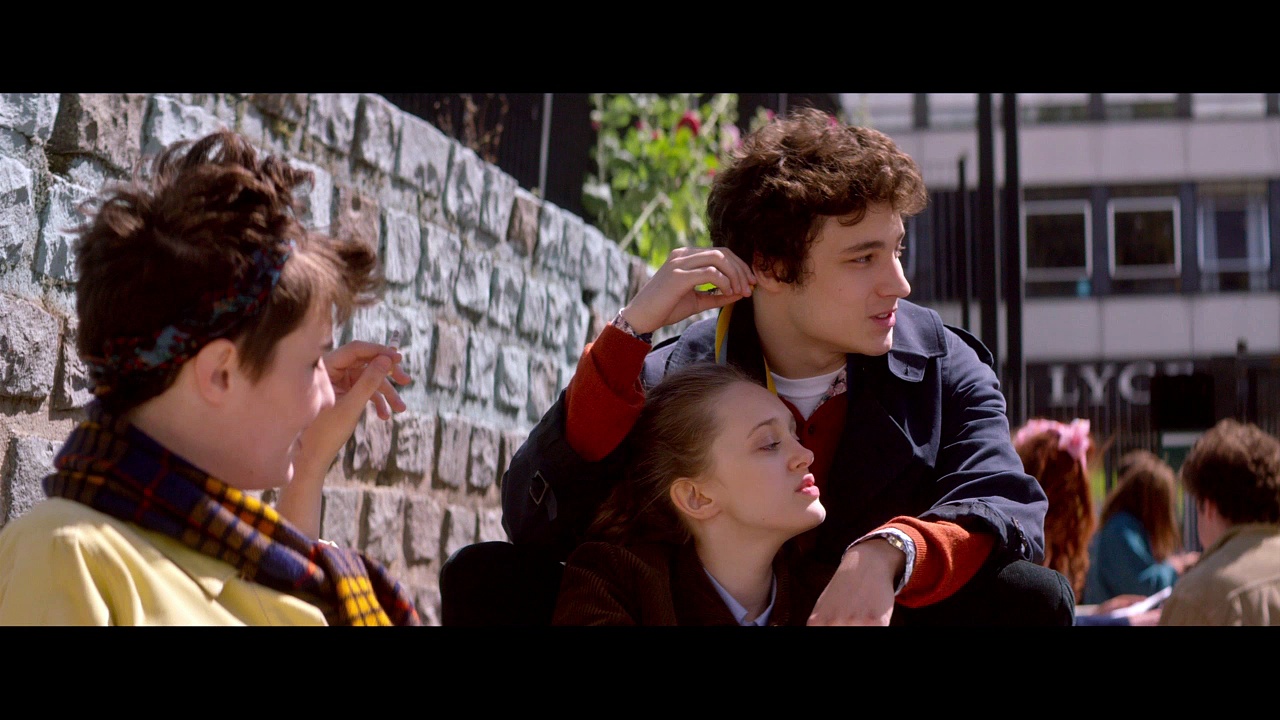 Quentin Dolmaire, center, in My Golden Days
Quentin Dolmaire, center, in My Golden Days For the first time in recent memory, it’s extremely difficult to select the top of the crop at this 53rd edition of the New York Film Festival (September 26-October 11), a question of too many contenders. I am not taking into consideration the tentpole films that anchor the festival, or any big studio movies, like Spielberg’s Bridge of Spies. That’s another kettle of fish.
Down below I list what I consider the crème de la crème (appropriate phrase, considering the usual Gallic slant) and review those titles briefly. Since they will all have commercial runs, I’ll be reviewing at length most of them at opening.
That said, I have some problems in the format itself, and with that necessarily some priorities. This is not to diminish the hard work and expertise of fest director Kent Jones and the contribution of his fellow selectors, including year-round Film Society of Lincoln Center programmer Dennis Lim. The FSLC could not itself have selected better than these two gifted film experts and writers to lead curating decisions at a partially reenergized institution, one which has endured growing pains beginning with the opening of the Walter Reade Theater in 1991 (there was no cinema before that), and continuing with the opening of the Bunin Center with its three smaller viewing spaces; and continuing with some absurdist, embarrassing hiring–dismissing–quitting miscalculations over the past few years and stream of executive directors. As at any institution, especially not-for-profit in the arts, you can always point to the board for every problem or contradiction, but that might be too easy.
Here are my issues with how the festival has been evolving:
— In some ways the hodge-podge assemblage of the festival is making it feel more like Tribeca, with its circus and unintegrated ancillary events, than the purer celebration of cinema as art that the NYFF used to be. I used to defend the FSLC when a friend regularly referred to the milieu as the dilettantes of Lincoln Center. Now I think, in spite of the talent and resources at hand, it is moving in a direction that might end up meriting the disparaging comment. That’s not to say that there are not some very good side events, like the Directors Dialogues. The interviewees speak the language of cinema, as do their interlocutors.
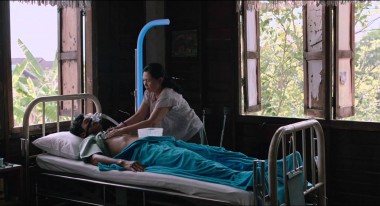
I imagine one could make a case for patron-friendly spectacles like An Evening With Kate Winslet (turned into a fundraiser). But the faux-academic Filmmaker in Residence program (Athina Rachel Tsangari?), and late additions of premieres of Hollywood films (Ridley Scott’s The Martian), and more special events than the big A-festivals have? The big question is: Why during the festival? More can be more but the so-called “Main Slate” remains at the same number of films every year. Why legitimize under the coveted NYFF umbrella, and drain staff energy and company funds, for an increasing number of haphazard happenings? It dilutes the special nature of those that have been anointed, properly curated. Call me anachronistic, but I think you’re in or you’re out. Can’t some of these “thank you for coming” pics four-wall, and not raise expectations? They weren’t good enough for the selection committee.
— Docs are still second-class citizens. The sparse screenings in the theaters with fewer seats say a lot about self-fulfilling prophecy over hustle and marketing bravado. In the early days, every chosen film was shown in Alice Tully Hall, including the press screenings. For this writer, it makes it nearly impossible to justify writing about the docs. For a tiny audience? And they are for the most part pretty much unavailable. Even if several are somehow related to cinematic biographies, they are light. Very few issue-oriented docs, sad to say. Perhaps finances, feeling the need to sell tickets without an accompanying hustle, is taking too much precedence.
— Most of these extras, high-falutin’ or mainstream, are frou frou compared to the fact that the NYFF has no catalog. It has a Playbill! Not to beat a dead horse, but even Tribeca puts out a catalog. Almost any European festival, no matter how small or underfunded, publishes one. Sometimes they are scholarly, focusing on a filmmaker or genre, or a series of articles, adding something permanent to film history. Can we just leave the glamor factor outside on the red carpet?
— Invaluable restorations compete with the newbies, which aren’t as tried and true as the classics. That makes the large number of Scorsese-fueled restorations in the Revivals section a siphon.
— Almost all of the filmmakers in the Main Slate are recognized festival darlings, and, as noted above, their films will open commercially here. It’s as if the same cans of films travel the circuit for a year. I miss the days when the NYFF offered perhaps the chance to discover something that would soon disappear from domestic view.
— Finally, the geographical range of the Main Slate: Asia, France and a few other countries in Western Europe, the U.S., a couple from outside that terrain. Opening, centerpiece, and closing: American. Is there nothing from Latin America, Africa, or Australia/New Zealand worthy enough? Only one film from Eastern Europe? What about the Middle East, whether Arab, Iranian, or Israeli? Programming is about taste and balance; sometimes films should be chosen for the audience as much as the curators. The imprimatur should be 100% for critical writing, which is less generous than the most successful curating.
In order of preference, the following titles are the ones I most highly recommend:
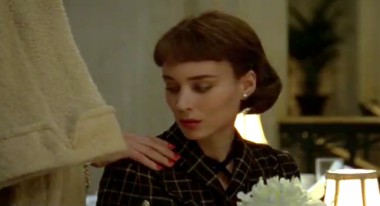
Carol (Todd Haynes, USA)
Most of the Klieg-light attention the film has received has been aimed at the controversial subject matter (“the love that dare not speak its name” between a bored, wealthy, newly divorced mother and a much younger photographer-cum-shopgirl in the repressed, conformist America of 1952), and the performances by Cate Blanchett (again?) as the title character (fine, but bordering on caricature as a “dirty old woman”) and Rooney Mara as the naïve, inexperienced Therese (superbly understated, well deserving of her Best Actress prize at Cannes).
The hoopla should be directed at Haynes and his team, who do great justice to the late novelist Patricia Highsmith’s The Price of Salt and Phyllis Nagy’s screenplay. Judy Becker’s production design impeccably captures the ‘50s without the falseness of most films set in the period, when vintage cars and couture of the era are expected to suffice. DP Ed Lachman creates magic with abstracted raindrops, with reflections and refractions that fill the frame beyond props and Sandy Powell’s choice outfits. The music is just right, highs and lows composed by Carter Burwell interspersed with memory-lane melodies.
This is Haynes’s best work, and certainly his most organic. The Sam Fuller maxim about motion as emotion is perfectly applicable. Carol is his most dynamic film, whether it be the recurring travel by car or the kinesis within individual shots. This, in spite of the director’s continued deployment of elegant framing, whether with windows, doorway, or brick walls. He synthesizes what in other hands would most likely come across as contradictory.
My Golden Days (Arnaud Desplechin, France)
Returning are the character Paul Dedalus, and his thespian embodiment, Mathieu Amalric, 20 years after they first appeared in Desplechin’s My Sex Life…or How I Got Into an Argument. Amalric’s character, now an anthropologist just returned to France following a long stint in Tajikstan, brackets the film, but the subject is really his memory, from childhood through adolescence (the French title translates as Three Remembrances of My Youth).
It begins in his provincial hometown of Roubaix, charting his mother’s suicide and father’s depression, then, like Paul, shifts to Paris, where he studies like a pauper, auditing and sleeping in cheap hostels and on friends’ couches. In between he moves in with his great-aunt, parties with his local pals, takes a trip to the USSR with a Jewish group and gives up his passport to a refusenik Jew — an act that will haunt him years later — displays a strong intellect and natural curiosity, and discovers girls. The one that counts most for the handsome, teen-aged Paul (Quentin Dolmaire) is the enigmatic, seductive Esther (Lou Roy-Lecollinet), who will haunt him for six years. The two young performers are both fresh new talents fated to do great work in the future.
Desplechin, one of the most lyrical of contemporary filmmakers, dispenses with master shots and, almost on the spot, goes in for a graceful baroque camera move or simply a pan to distinguish one time period from another. Irina Lubtchansky’s cinematography is the ideal vehicle. He plays with technique in post as well, for example, the iris shots that signal recollections. As in life, humor and melancholia are simultaneously at work in this poignant essay on the impact of the past on the present.
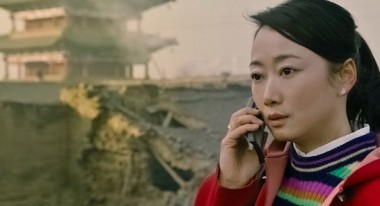
Mountains May Depart (Jia Zhangke, China/France/Japan)
Jia Zhangke’s wife and muse Zhao Tao gives her best performance to date as Shen Tao, a simple young woman who ages more than a quarter-century in this three parter set in the filmmaker’s provincial hometown of Fenyang, then Shanghai, and finally Australia. The first section is set in 1999, when she is courted by two friends of different background. Liangzi (Liang Jin Dong) is her official bf, an affable, laid-back coal miner; Zhang (Zhang Yi) is an ambitious entrepreneur who buys the mine and makes no secret of his economic ambitions. Like China itself, she opts for the money. The toll that economic priorities have taken on the Chinese character and family is principal subject here.
By 2014, when the second part begins, she is divorced from Zhang, who has taken their young son, appropriately named Dollar by his father, to Shanghai, where he builds an empire. Liangzi is long gone; Shen Tao is essentially all alone. This is a far cry from the gregariousness she and her friends display when the film opens, in a memorable scene where they do a conga line to the tune of the Pet Shop Boys’ cover of the Village People’s “Go West.” Jia Zhangke increases the aspect ratio between parts one and two; by the third segment, he and regular DP Yu Lik-wai move into full ‘Scope.
The sections are separated by exquisite abstracted imagery. The Perth-set chapter, set in a future 2025, is shot in English. Dollar has grown into a lost, rebellious young man, on the outs with his financially failed dad. He forms an extremely tight connection with his much older teacher, portrayed by the legendary Sylvia Chang. You will have to see the film to find out what, if anything, occurs between Dollar and the mother he has had no contact with for a dozen years. Can I just mention that “Go West” pops up again, in a context that moves you to tears? Who else could get away with that?
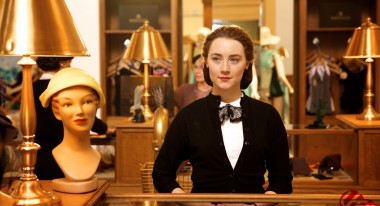
Brooklyn (John Crowley, UK/Ireland/Canada)
Crowley’s background as a theater director is much in evidence in the portrayals he gets from his actors, just as it was in Boy A, a completely different kind of film in which the lead was played by an unknown Andrew Garfield. Yet another picture set in the early ‘50s, Brooklyn, adapted by Nick Hornby from Colm Toibin’s novel, is the tale of a conflicted young Irish immigrant, Eilis Lacy (Saoirse Ronan), torn between her family in her small Irish hometown and the new life, job, and boyfriend she has found in the titular borough, almost as heavily Irish as Ireland itself.
In Boy A, based on an actual case and set in the UK, Crowley showed how at ease he is depicting working-class life. The same can be said for Brooklyn, whether it be with Eilis and her friends at the boarding house run by the outspoken Mrs. Keough (a delightful Julie Walters) or with her and her new guy, the Italian-American plumber Tony (a standout Emory Cohen). When a family tragedy calls her back to Ireland, Eilis begins another courtship, this time with a young man from the landed gentry. Jim Farrell (Domhnall Gleeson) is a gentleman who is very kind to her, but Crowley shows little interest in filming much about his family or their aristocratic lifestyle.
In fact, everything in the film is there as it applies to Eilis. She is not only its emotional and narrative center, she is in almost every shot. The examination of her guilt-ridden relationship with her lonely mother is the exception. The movie is shot in vivid color by Yves Bélanger, but, while it is beautiful and engaging, it is ultimately conventional in structure and aesthetic. The drama itself sets it apart as an excellent film. The resolution of Eilis’s dilemma, choosing between countries as well as love interests, is so intensely drawn that it has staying power in the viewer’s memory bank.
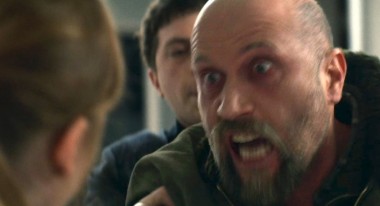
Les Cowboys (Thomas Bidegain, France)
The first feature by Bidegain, screenwriter for several of Jacques Audiard’s films, is both unusual and unpredictable, with so many twists that it would be difficult to wrap your head around it if it didn’t tell such a fascinating story and take on subjects and material that are engagingly other without exoticism.
Let’s start with the title: The Rhone Valley has communities in which French people take the entire cowboy mythology seriously. The magnificent opening sequence is shot at a cowboy fair in 1994. Beyond that, the narrative itself pits one of the adult cowboys from the fair against the world in the style of John Wayne in The Searchers: His daughter has disappeared from the event, as it turns out with a young Arab Muslim jihadist — American Indians in the world of these western-obsessed Frenchmen.
With his son, not so strangely among these folks named Kid, in tow, Alain (French comic François Damiens), obsessively searches for the absent girl. He is not interested in anything or anyone else, and makes no bones about it. He has a violent streak, kept somewhat in check by Kid. Alain’s wife, more accepting of the daughter’s freedom of choice, waits patiently at home. After a tragic turn of events, Kid really becomes a cowboy, heading overseas to Pakistan as an aid worker, living in the rough, the hunt for his sister never out of his mind. John C. Reilly appears as a 21st-century version of a bounty hunter to help him in the search for the young woman and the Arab man, now her husband.
Arnaud Potier films in anamorphic ‘Scope with old lenses, with blurs, distortions, and visible edges of frames. Bidegain stresses the distinction between gray, claustrophobic European cities and the wide open spaces dear to cowboys. What Kid finds must remain a secret until you see the movie. It is simply a fabulous end point for a Wild West adventure.
Cemetery of Splendor (Apichatpong Weerasethakul, Thailand/UK/France/Germany/Malaysia)
Once again, Weerasethakul gives us a feast of a film that refuses to differentiate between reality and fantasy, the spiritual realm. He is cinema’s great pantheist, and his affection for the wonders of nature rivals that which he has for other people. Not one to soft-pedal the nasty political situation in military-led Thailand, he nevertheless expresses in his films a love for his country, its traditions, and its history. Nowhere is this more apparent than in Cemetery of Splendor, which also incorporates episodes from the personal histories of the director and his lead actress.
Set in his hometown of Khon Kaen, in the lush northeast that many consider backward, the film’s conceit is that a battalion of contemporary soldiers all fall ill with an illness that makes them somnambulent. They are housed in an old school, where a partially crippled middle-aged volunteer, Jenjira (the director’s regular Jenjira Pongpas Widner), tends to a younger, handsome patient, Itt (Banlop Lomnoi). It’s an odd pairing, but when medium Keng, who can decipher the sleeping men’s thoughts and dreams, takes on Itt’s soul and body, the two develop a powerful rapport, one that incorporates some amusing, slightly twisted sensuality.
Even the hospital scenario is rooted in history. The location is the spot where warring kings were buried, and the energy of their fights has infected the young combatants. New DP Diego Garcia shoots the interior and exterior beauty with fewer long takes than we’ve seen in Weerasethakul’s films. I don’t want to give anything away, but in spite of the morbid atmosphere, vivacity takes over.
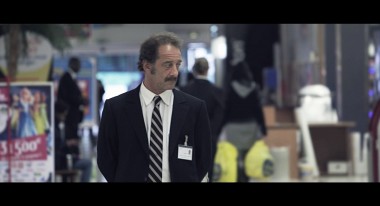
The Measure of a Man (Stéphane Brizé, France)
Contemporary economics is at the root of Brizé’s film, based on a screenplay he wrote with Olivier Gorce. Thierry Laugourdeau, a 51-year-old man unemployed for 20 months since he was, as it turns out unnecessarily, fired from his longtime factory job, is played brilliantly by Cannes Best Actor Vincent Lindon — the only professional in the cast. Almost the entire film is from his point of view. Lindon’s hangdog look, and restraint with any kind of expression, makes the fit work. To make sure that the ‘Scope film feels entirely authentic, Brizé uses as his DP Eric Dumont, who had only shot documentaries before. The crew and the budget are intentionally small.
We see Laugourdeau get the runaround at government agencies, waste his time on an unproductive internship, do an interview by Skype — all forms of humiliation. He needs to support his wife and their severely disabled son, Mathieu (Mathieu Schaller), who has been adversely affected by the instability lack of work has brought to their home. Peers are not always fair: At the time he feels forced to sell his RV, the buyer, who had agreed to a certain price in advance of his visit, reduces the offer. When financially strapped, you have no allies.
He accepts the only job he is offered: security man at a big-box department store, the kind frequented by proles like himself. We watch with him multiple video monitors, like voyeurs trying to catch those desperate enough to stuff small items into their coat pockets or handbags. We are not talking about nice jewelry: These are for the most part poor folks, like an old man whose pension money for the month has run out, or an employee who merely keeps discount coupons. He acts the good cop in the store’s interrogation room, but Lindon holds back energy so effectively that we do not know the depths to which his conscience is tested. To give away more means a spoiler, but this is a must-see, similar to a Dardennes project but no replica.
I also suggest you see in this banner year the following highly accomplished films: The Treasure (Corneliu Porumbiou, Romania/France); Mia Madre (Nanni Moretti, Italy/France); The Assassin (Hou Hsiao-hsien, Taiwan/China/Hong Kong); and The Lobster (Yorgos Lanthimos, Ireland/UK/France/Greece/Netherlands).
